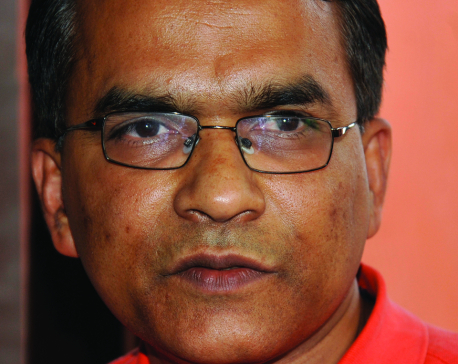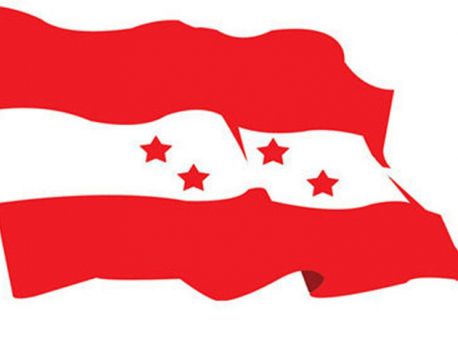
OR
Many macroeconomic indicators worsen on Oli govt's watch
Published On: May 21, 2019 06:00 AM NPT By: Republica | @RepublicaNepal

From BOP position to budget implementation, performance remains weak
KATHMANDU, May 21: Most of the economic indicators have worsened in the first three quarters of the current fiscal year 2018/19, compared to a year ago.
According to recent data released by Nepal Rastra Bank (NRB), most of the economic indicators have deteriorated in the first eight months of fiscal year 2018/19.
Even those macroeconomic indicators that were in better shape before the current government was sworn in are now heading toward negative territory.
In contrast to the promises made by Minister for Finance Yuba Raj Khatiwada to turn around the economy which he had portrayed as being in bad shape when he issued a white paper after being sworn into office, data shows that the macroeconomic and financial situation of the country has deteriorated.
According to NRB data, the balance of payments (BoP) has slipped into a deficit of Rs 64.68 billion in first nine months of the fiscal year compared to a deficit of Rs 14.6 billion in the same period the previous fiscal year of 2017/18. Performance on the external front has remained particularly weak as the trade deficit continues to widen at an alarming rate amid sluggish export growth and rising imports.
The total trade deficit widened 21.6 percent to Rs 991.81 billion in nine months .
At the same time, foreign income has been dwindling. Foreign direct investment (FDI) has nearly halved to Rs 7.1 billion in the nine month period from Rs 14.41 billion in the corresponding period last year. Similarly, capital transfer also fell to Rs 12.48 billion from Rs 13.15 billion. The foreign exchange (forex) reserve is depleting mainly due to the rising import bill .
According to NRB data, the gross forex reserve stood at Rs 1,050.85 billion as at mid-April 2019, down from Rs 1,102.59 billion as at mid-July 2018.
However, remittance growth has remained strong in the current fiscal year. The country received a total of Rs 653.19 billion in remittances in the review period, up by 20.9 percent over the corresponding period last year.
The performance of the government with a two-third majority has not been any different in terms of implementing the budget. According to the Financial Comptroller General's Office (FCGO), the government has been able to spend only 55.14 percent of the allocated budget as of Sunday. Out of the allocated budget of Rs 1,1315.16 billion for the current fiscal year, nearly half has remained unspent although only two months are left in the fiscal year .
The progress in capital expenditure is even worse. Out of the total capital budget of Rs 313.998 billion allocated for the current fiscal year, the government has been able to spend only 41.7 percent so far.
The government is also short of its revenue target. According to FCGO data, the government has been able to collect Rs 569.17 billion in revenue. This is 68.47 percent of target.
However, there are some macroeconomic indicators like GDP growth and inflation where there are some improvements in the current fiscal year.
You May Like This

Our problem is we cannot borrow money and we cannot spend money: Biswo Poudel
The government of K P Sharma Oli has not been able to do much about improving Nepal’s economic indicators. Where... Read More...

Ban on Chand-led group’s activities is weakness of government: Nepali Congress
KATHMANDU, Mar 13: The main opposition Nepali Congress has said that the decision taken by the government to ban the activities... Read More...

Incumbent govt to complete Pashchim Seti Hydropower: PM Oli
DADELDHURA, Feb 19: Prime Minister KP Sharma Oli has said that the Pashchim Seti Hydropower Project will be constructed during... Read More...









Just In
- Forced Covid-19 cremations: is it too late for redemption?
- NRB to provide collateral-free loans to foreign employment seekers
- NEB to publish Grade 12 results next week
- Body handover begins; Relatives remain dissatisfied with insurance, compensation amount
- NC defers its plan to join Koshi govt
- NRB to review microfinance loan interest rate
- 134 dead in floods and landslides since onset of monsoon this year
- Mahakali Irrigation Project sees only 22 percent physical progress in 18 years









Leave A Comment